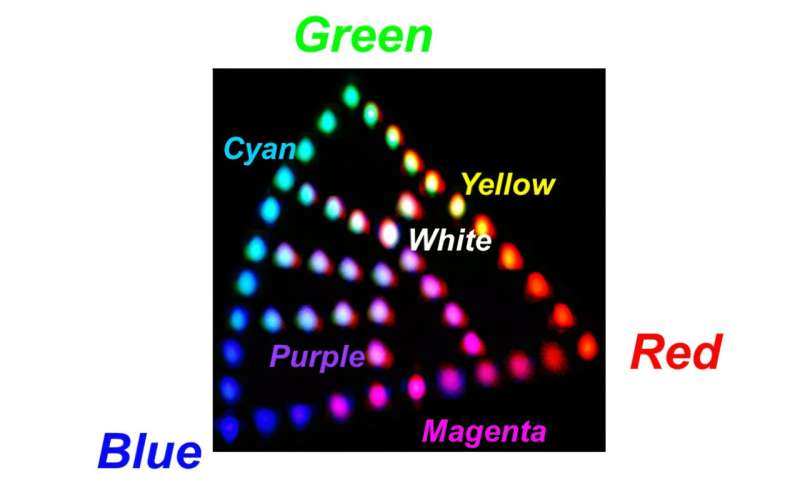Researchers at TDK Corporation in Japan have developed a groundbreaking RGB multiplexer utilizing thin-film lithium niobate (TFLN), which promises to enhance the speed and efficiency of laser beam scanning (LBS) technology. Published on July 28, 2025, in the journal Advanced Photonics Nexus, this innovation is set to revolutionize applications ranging from barcode scanning to advanced light displays.
Advancements in Optical Systems
As traditional electronics face limitations, photonic systems are emerging as a superior alternative, using light for information transmission and processing. LBS, an essential application of photonics, involves steering laser beams to capture, sense, or present information. Typically, these systems rely on multiplexers to combine red, green, and blue (RGB) laser beams into a single output. Historically, each laser was modulated individually, a method criticized for being slow and energy-consuming.
The newly developed TFLN-based multiplexer offers a solution to these challenges. By employing electric fields to manipulate light propagation, this system achieves faster modulation speeds with significantly lower power requirements. Atsushi Shimura, the corresponding author of the study, emphasizes the importance of this advancement, stating, “A TFLN-based RGB multiplexer is essential for LBS with lower power consumption and higher resolution.”
Technical Innovations and Challenges
The multiplexer measures just 2.3 millimeters in length. It was fabricated using a physical vapor deposition technique, or “sputter” process, followed by etching to create waveguides that effectively direct the laser light. This method eliminates the complex bonding processes associated with bulk lithium niobate, paving the way for scalable and cost-effective production of compact photonic circuits.
The design of the waveguides features a trapezoidal cross-section, which minimizes signal loss. The researchers successfully combined laser beams of red (638 nm), green (520 nm), and blue (473 nm), demonstrating the ability to generate a variety of colors including cyan, magenta, yellow, and even white light. Such precise color control is critical for applications that utilize LBS technology.
“Optimizing fabrication processes to produce smoother surfaces is a key step toward realizing TFLN’s potential in visible-light photonics and applications,” says Shimura.
While the results are promising, the study also identifies challenges. The quality of the sputter-deposited TFLN crystals is lower compared to traditional bulk lithium niobate, particularly affecting performance at shorter wavelengths. For example, at 473 nm, the optical loss measured between 7 and 10 dB, notably higher than the anticipated 3.1 dB. This discrepancy is primarily attributed to surface roughness in the waveguides, which leads to scattering and reduces overall efficiency.
Despite these limitations, the findings lay the groundwork for the future development of faster and more energy-efficient multiplexers for visible-light LBS systems. Shimura concludes, “This work demonstrates the feasibility of a passive RGB multiplexer as a first step toward developing active photonic integrated circuits.” As research continues, advancements in TFLN technology could significantly enhance the capabilities of photonic systems worldwide.
For further insights, the study can be accessed in Advanced Photonics Nexus under the title, “Visible light red, green, and blue multiplexer by sputter-deposited thin-film lithium niobate.”







































































